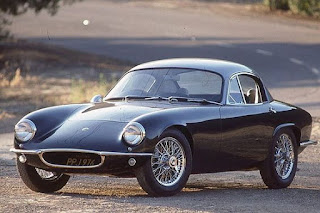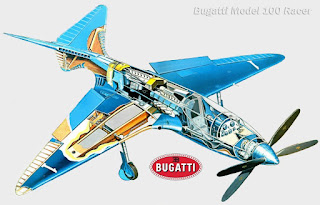History of Lotus- The Elite-... http://www.autosmithcar.com/
The Lotus Elite name has been used for two production vehicles and one concept vehicle from Lotus Cars. The first generation Elite Type 14 was produced from 1957 to 1963 and the second generation model (Type 75 and later Type 83) from 1974 to 1982. The Elite name was also applied to a concept vehicle revealed in 2010.
The car debuted at the 1957 London Motor Car Show, Earls Court as chassis #1008.[3] The Elite had spent a year in development, aided by "carefully selected racing customers" before going on sale.[4]
The Elite's most distinctive feature was its highly innovative fibreglass monocoque construction, in which a stressed-skin GRP unibody replaced the previously separate chassis and body components. Unlike the contemporary Chevrolet Corvette, which used fibreglass for only exterior bodywork, the Elite used glass-reinforced plastic for the entire load-bearing structure of the car, although a steel subframe for supporting the engine and front suspension was bonded into the front of the monocoque, as was a square-section windscreen-hoop that provided mounting points for door hinges, jacking point for lifting the car and roll-over protection.[5] The first 250 body units were made by Maximar Mouldings at Pulborough, Sussex.[6] The body construction caused numerous early problems, until manufacture was handed over to Bristol Aeroplane Company.[4]
The resultant body was lighter, stiffer, and provided better driver protection in the event of a crash. Still, a full understanding of the engineering qualities of fibreglass-reinforced plastic was still several years off and the suspension attachment points were regularly observed to pull out of the fibreglass structure. The weight savings allowed the Elite to achieve sports car performance from a 75 hp (55 kW) 1216 cc Coventry Climax FWE all-aluminium straight-4 engine while returning fuel consumption of 35 mpg‑imp (8.1 L/100 km; 29 mpg‑US).[1] All production Lotus Elites were powered by the FWE engine. (Popular mythology says that cars left the factory with a variety of engines, but this is incorrect.) The FWE engine, derived from a water pump engine usually found bolted to a fire truck,[7] was used by Lucas Electric for electrical component life testing in the presence of intense vibration.
The car had independent suspension all round with transverse wishbones at the front and Chapman struts at the rear. The rear struts were so long, that they poked up in the back and the tops could be seen through the rear window.[1]The Series 2 cars, with Bristol-built bodies, had triangulated trailing radius arms for improved toe-in control. Girling disc brakes, usually without servo assistance, of 241 mm (9.5 in) diameter were used, inboard at the rear. When leaving the factory the Elite originally fitted Pirelli Cinturato 155HR15 tyres (CA67)
Advanced aerodynamics also contributed to the car's very low drag coefficient of 0.29 – quite low even for modern cars.[1] This accomplishment is all the more remarkable considering the engineers did not enjoy the benefits of computer-aided design or wind tunnel testing. The original Elite drawings were by Peter Kirwan-Taylor. Frank Costin(brother of Mike, one of the co founders of Cosworth), at that time Chief Aerodynamic Engineer for the de Havilland Aircraft Company, contributed to the final design.
The SE was introduced in 1960 as a higher-performance variant, featuring twin SU carburettors and fabricated exhaust manifold resulting in 85 bhp, ZF gearboxes in place of the standard "cheap and nasty" MG ones,[4] Lucas PL700 headlamps,[8] and a silver coloured roof. The Super 95 spec, with more power,[4] from a higher tuned engine with raised compression and a fiercer camshaft with five bearings. A very few Super 100 and Super 105 cars were made with Weber carburettors, for racing use.
Among its few faults was a resonant vibration at 4000 rpm (where few drivers remained, on either street or track)[9] and poor quality control, handicapped by overly low price (thus losing money on every car produced) and, "perhaps the greatest mistake of all", offering it as a kit, exactly the opposite of the ideal for a quality manufacturer.[4] Many drive-train parts were highly stressed and required re-greasing at frequent intervals.
When production ended in 1963, 1030 had been built.[10] Other sources indicate 1,047 were produced.[11]




Comments
Post a Comment